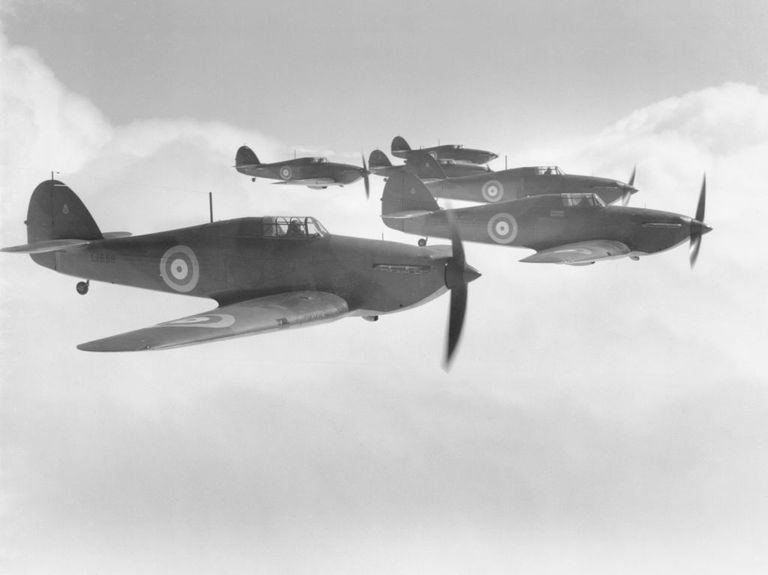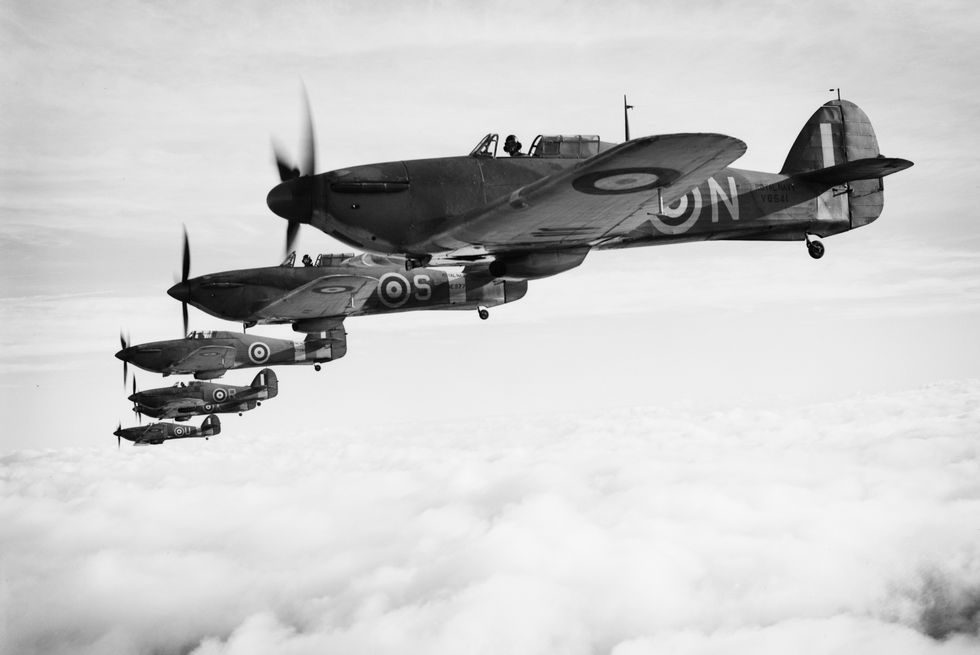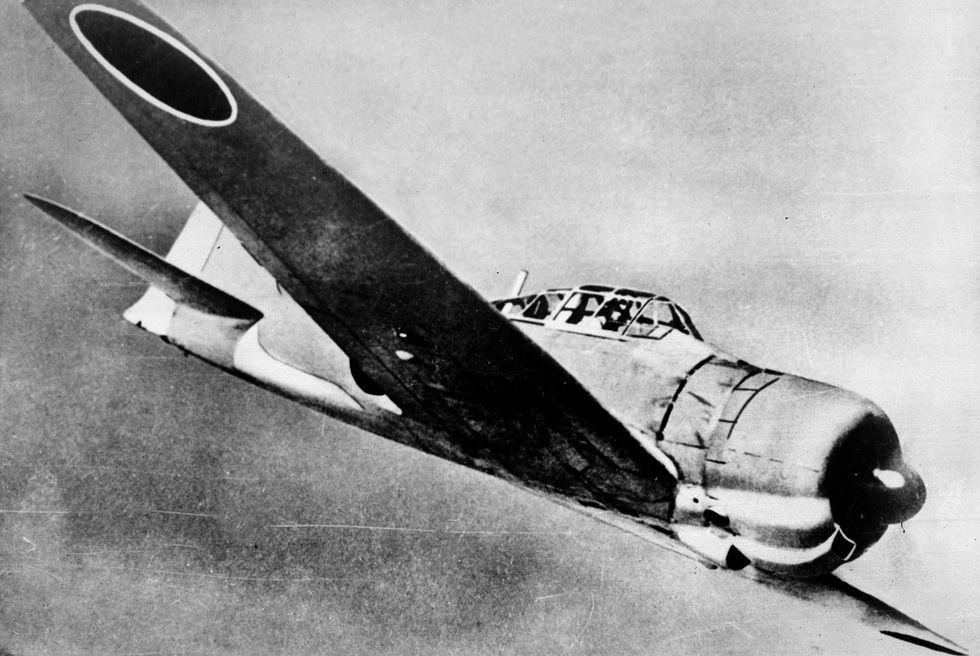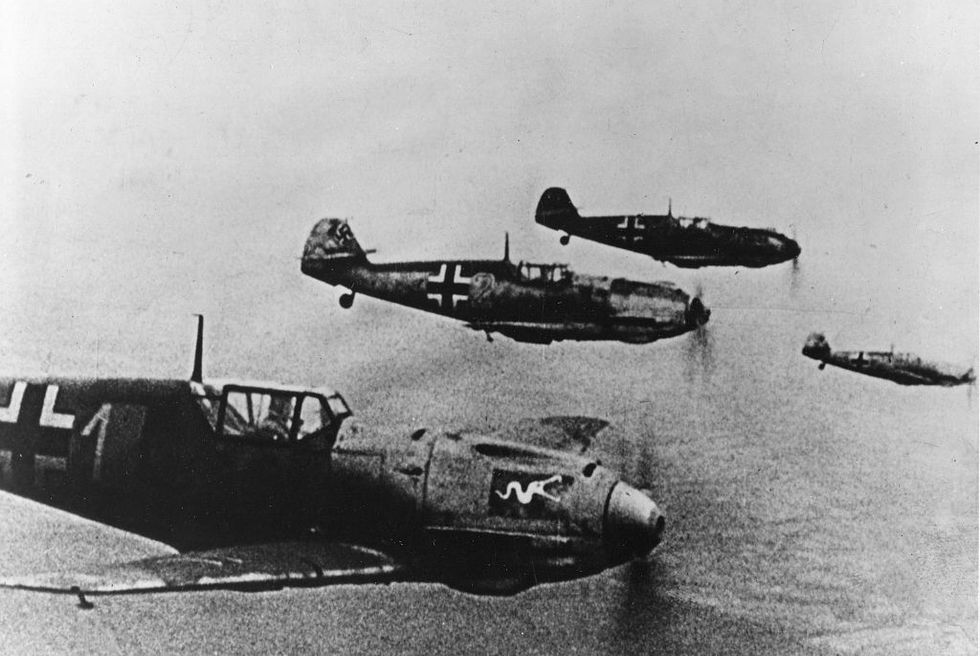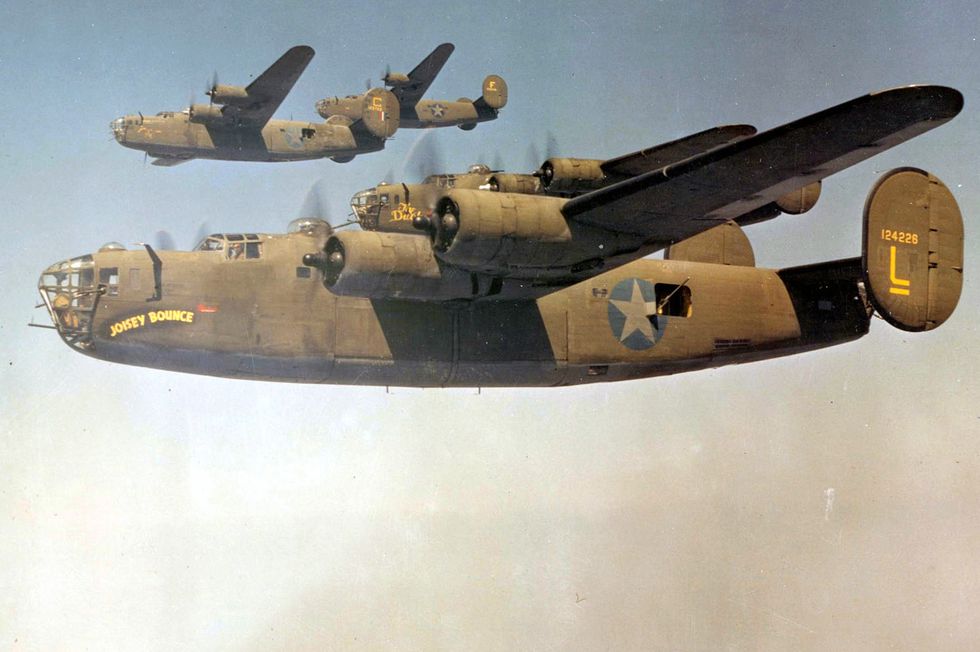The Second World War was in many ways an aerial war. While previous wars had taken place on land and sea, and thousands of fighter planes flew over the battlefields of World War I, the development of new types of planes led to new roles for aircraft. Rather than functioning as a supporting arm, air forces were at last on equal footing with land and naval forces. Air power’s rise culminated in the use of single bombs—atomic bombs—that killed hundreds of thousands at Hiroshima and Nagasaki.
There are many ways to evaluate the most important aircraft of World War II. The most produced obviously have a place, but we’re also considering those that altered the strategic course of the war and others that ushered in new, groundbreaking technology.
These five combat aircraft proved to be the most important during WWII.
Hawker Hurricane
Not many airplanes are christened by a king and later go on to save a nation, but the Hawker Hurricane did exactly that.
The Hurricane was designed by legendary British aviation engineer Sidney Camm as an eight-gun monoplane fighter, and first flew in 1935. The plane was equipped with a Rolls-Royce Merlin engine that gave it a top speed of 340 mph and a generous eight Browning .303 machine guns. The aircraft was accepted into the Royal Air Force in June 1936 and was officially named “Hurricane” by King Edward VIII in July.
In 1940, German dictator Adolph Hitler, having conquered France and the Low Countries, turned his gaze towards the British Isles. The German Luftwaffe attempted to gain air supremacy over the Royal Air Force as a first step toward invasion, and the Battle of Britain was on. Over the course of the battle the German air force lost 1,887 airplanes, with more than half shot down by Hurricanes.
Invasion plans were canceled, and the U.K. became a staging ground for the liberation of Europe four years later. The Battle of Britain is probably the most consequential victory in the history of air power, in large part due to the Hawker Hurricane.
Mitsubishi A6M Zero
In the days before the attack on Pearl Harbor, Admiral Isoroku Yamamoto was asked what a war with the United States would look like. Yamamoto replied, “I shall run wild considerably for the first six months or a year, but I have utterly no confidence for the second and third years.” Yamamoto was correct, and his Combined Fleet ran wild across the Indo-Pacific for six months after the attack. The tip of his spear was the Mitsubishi A6M fighter, known as the Zero-sen—at the time the best carrier-based fighter in the world.
The Zero fighter, also known as “Zeke” to Allied intelligence, was originally designed by noted aircraft designer Jiro Horikoshi. The Zero was fast and phenomenally agile, allowing Japanese pilots to outmaneuver older Allied planes, with a long range suited to the Pacific theater. Its armament consisted of two 7.7mm machine guns and two 20mm cannon, heavy enough to make enemy pilots pay for even the smallest of mistakes.
Although the Zero initially scored many successes, new Allied tactics and airplanes eventually negated its advantage, and its lack of armor protection made it fragile in the face of enemy fire.
Messerschmitt Bf 109
The Messerschmitt Bf 109 was the main German fighter of World War II and the most produced fighter of the war.
The Bf 109 made its debut in the Spanish Civil War with the Condor Legion, a German military contingent fighting for Spanish nationalists. The Bf 109 was fast and heavily armed, with two 7.7mm machine guns and one 20mm cannon, and had armor that protected the pilot and fuel supply.
It had a very high rate of climb, exceeding most Allied fighters, allowing it to zoom to higher altitudes and then descend in ambush, guns blazing. This capability made the Bf 109 useful in racing to intercept Allied bombers pummeling Germany later in the war.
The Bf 109 ended up serving as the backbone of the Luftwaffe for more than eight years, considerably longer than most. German industry found it easier to build the same fighter under wartime conditions than to switch types mid-war. Germany built 33,948 Bf 109s, making it the most produced fighter on either side of the war.
Consolidated B-24 Liberator
Although the B-17 Flying Fortress is typically considered the “face” of World War II heavy bombers, the real MVP of Allied long-range bombing was in fact the Consolidated B-24 Liberator.
The four-engine B-24, bristling with 10 .50-caliber M2 machine guns and carrying up to 5,000 pounds of bombs on long-range bombing missions, carried out the bulk of strategic bombing over the course of the war, striking targets as far away as Berlin, Germany, and southern Japan.
America’s “Arsenal of Democracy” cranked out 18,482 B-24 bombers, compared to 12,732 B-17 Flying Fortresses. The B-24 was also faster than the B-17 and could carry 2,000 pounds’ worth more bombs. This made the B-24, on sheer numbers alone, more important to the Allied strategy than the B-17.
Messerschmitt Me 262 “Schwalbe”
In August 1944, as the Allied forces swept across France, Allied air forces encountered a fighter unlike any other. The fighter had no visible propeller and two nacelles, one under each wing. Observers on the ground reported a screeching roar as the mystery plane passed by instead of the usual steady drum of a radial engine. The bullet-nosed plane was easily 200 mph faster than Allied fighters at cruising speed and could climb unnaturally fast.
Allied intelligence quickly realized that Germany had fielded the world’s first jet-powered fighter jet. The Messerschmitt Me 262 was powered by two Junkers Jumo 004, B-1 turbojet engines, giving it unrivaled power against practically any aircraft flying at the time. The jet engine was such a technological leap that the appearance of the Me 262 spelled the end for non-jet fighters and bombers, as no radial-powered aircraft could keep up. Within five years, nearly all of the world’s major air forces had rearmed with jet aircraft.

Kyle Mizokami is a writer on defense and security issues and has been at Popular Mechanics since 2015. If it involves explosions or projectiles, he's generally in favor of it. Kyle’s articles have appeared at The Daily Beast, U.S. Naval Institute News, The Diplomat, Foreign Policy, Combat Aircraft Monthly, VICE News, and others. He lives in San Francisco.
